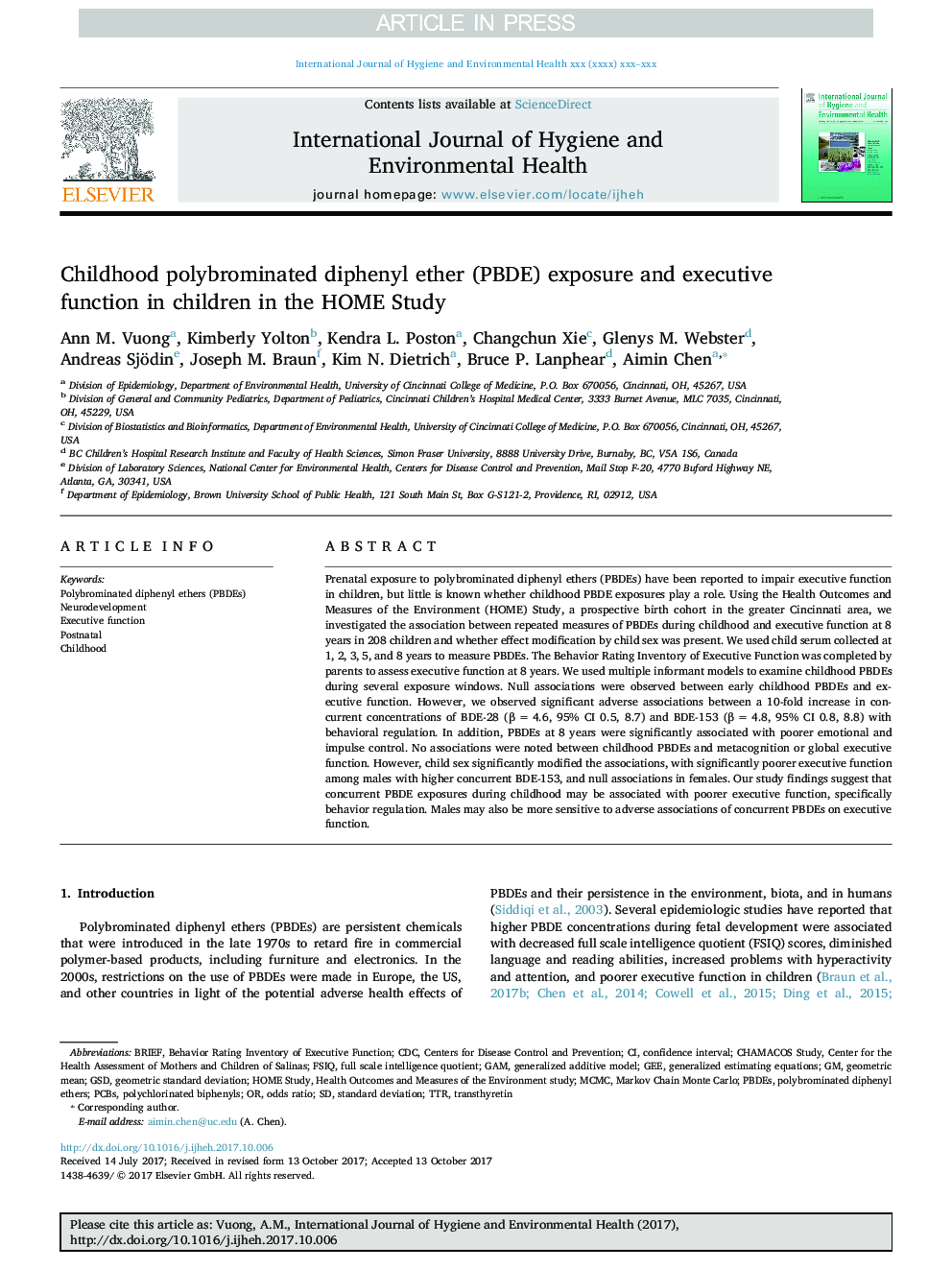| Article ID | Journal | Published Year | Pages | File Type |
|---|---|---|---|---|
| 8549859 | International Journal of Hygiene and Environmental Health | 2018 | 8 Pages |
Abstract
Prenatal exposure to polybrominated diphenyl ethers (PBDEs) have been reported to impair executive function in children, but little is known whether childhood PBDE exposures play a role. Using the Health Outcomes and Measures of the Environment (HOME) Study, a prospective birth cohort in the greater Cincinnati area, we investigated the association between repeated measures of PBDEs during childhood and executive function at 8 years in 208 children and whether effect modification by child sex was present. We used child serum collected at 1, 2, 3, 5, and 8 years to measure PBDEs. The Behavior Rating Inventory of Executive Function was completed by parents to assess executive function at 8 years. We used multiple informant models to examine childhood PBDEs during several exposure windows. Null associations were observed between early childhood PBDEs and executive function. However, we observed significant adverse associations between a 10-fold increase in concurrent concentrations of BDE-28 (β = 4.6, 95% CI 0.5, 8.7) and BDE-153 (β = 4.8, 95% CI 0.8, 8.8) with behavioral regulation. In addition, PBDEs at 8 years were significantly associated with poorer emotional and impulse control. No associations were noted between childhood PBDEs and metacognition or global executive function. However, child sex significantly modified the associations, with significantly poorer executive function among males with higher concurrent BDE-153, and null associations in females. Our study findings suggest that concurrent PBDE exposures during childhood may be associated with poorer executive function, specifically behavior regulation. Males may also be more sensitive to adverse associations of concurrent PBDEs on executive function.
Keywords
transthyretinCDCMCMCPCBsGSDTTRGAMFSIQPBDEsPolybrominated diphenyl ethers (PBDEs)geometric standard deviationstandard deviationgeneralized estimating equationsPolychlorinated biphenylsneurodevelopmentGEEChildhoodPolybrominated diphenyl ethersMarkov chain Monte Carloconfidence intervalBehavior Rating Inventory of Executive FunctionBRIEFGeneralized additive modelCenters for Disease Control and PreventionCenter for the Health Assessment of Mothers and Children of SalinasFull Scale Intelligence QuotientGeometric meanodds ratioPostnatalexecutive function
Related Topics
Life Sciences
Environmental Science
Health, Toxicology and Mutagenesis
Authors
Ann M. Vuong, Kimberly Yolton, Kendra L. Poston, Changchun Xie, Glenys M. Webster, Andreas Sjödin, Joseph M. Braun, Kim N. Dietrich, Bruce P. Lanphear, Aimin Chen,
